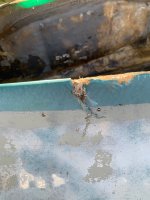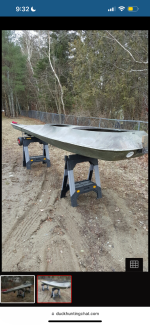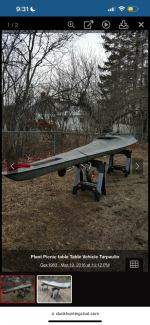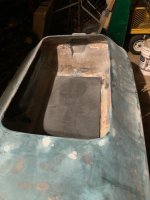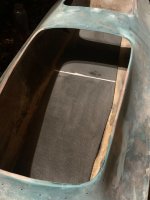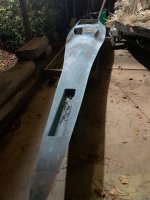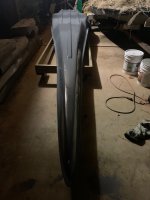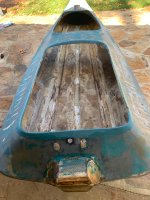I know this might open a can of worms and dont want to get off topic but this was why I went with vinyl ester on the Broadbill and am using my over ordered material on this boat: (cost vs water absorption vs bonding vs strength)
1. Polyester Resin
• Advantages:
o Lowest cost – most affordable option, ideal for large projects.
o Fast curing – speeds up production and repairs.
o Good UV resistance – holds up well in sunlight.
o Easy to use – forgiving for beginners, sands and finishes easily.
o Bonds well to gelcoat – common in hull and deck construction.
• Disadvantages:
o Weakest adhesion – poor bonding compared to epoxy or vinyl ester.
o More brittle – prone to cracking under stress.
o Water absorption – can lead to blistering and delamination over time.
o Short shelf life – degrades quickly in storage.
o Toxic catalyst required – requires careful handling.
________________________________________
2. Vinyl Ester Resin
• Advantages:
o Superior water resistance – excellent against blistering and osmosis.
o Better elongation – more flexible, resists cracking under stress.
o Good chemical and heat resistance – ideal for high-performance boats.
o Stronger adhesion – bonds better than polyester.
o Middle price point – cheaper than epoxy but stronger than polyester.
• Disadvantages:
o Short shelf life – degrades quickly like polyester.
o Not as strong as epoxy – though stronger than polyester.
o More expensive than polyester – adds cost to large builds.
o Catalyst required – precise mixing needed for proper curing.
________________________________________
3. Epoxy Resin
• Advantages:
o Strongest adhesion and bonding – sticks to wood, metal, cured laminates, and composites.
o Excellent waterproofing – minimal water absorption, prevents delamination.
o High flexibility – resists cracking under stress or impact.
o Best chemical resistance – resists fuels, solvents, and corrosion.
o Low shrinkage – maintains shape and strength after curing.
• Disadvantages:
o Highest cost – significantly more expensive than polyester or vinyl ester.
o Longer cure time – requires patience and controlled conditions.
o Limited compatibility – does not bond well to polyester-based structures.
o More complex mixing – requires precise ratios and careful handling.
1. Polyester Resin
• Advantages:
o Lowest cost – most affordable option, ideal for large projects.
o Fast curing – speeds up production and repairs.
o Good UV resistance – holds up well in sunlight.
o Easy to use – forgiving for beginners, sands and finishes easily.
o Bonds well to gelcoat – common in hull and deck construction.
• Disadvantages:
o Weakest adhesion – poor bonding compared to epoxy or vinyl ester.
o More brittle – prone to cracking under stress.
o Water absorption – can lead to blistering and delamination over time.
o Short shelf life – degrades quickly in storage.
o Toxic catalyst required – requires careful handling.
________________________________________
2. Vinyl Ester Resin
• Advantages:
o Superior water resistance – excellent against blistering and osmosis.
o Better elongation – more flexible, resists cracking under stress.
o Good chemical and heat resistance – ideal for high-performance boats.
o Stronger adhesion – bonds better than polyester.
o Middle price point – cheaper than epoxy but stronger than polyester.
• Disadvantages:
o Short shelf life – degrades quickly like polyester.
o Not as strong as epoxy – though stronger than polyester.
o More expensive than polyester – adds cost to large builds.
o Catalyst required – precise mixing needed for proper curing.
________________________________________
3. Epoxy Resin
• Advantages:
o Strongest adhesion and bonding – sticks to wood, metal, cured laminates, and composites.
o Excellent waterproofing – minimal water absorption, prevents delamination.
o High flexibility – resists cracking under stress or impact.
o Best chemical resistance – resists fuels, solvents, and corrosion.
o Low shrinkage – maintains shape and strength after curing.
• Disadvantages:
o Highest cost – significantly more expensive than polyester or vinyl ester.
o Longer cure time – requires patience and controlled conditions.
o Limited compatibility – does not bond well to polyester-based structures.
o More complex mixing – requires precise ratios and careful handling.

